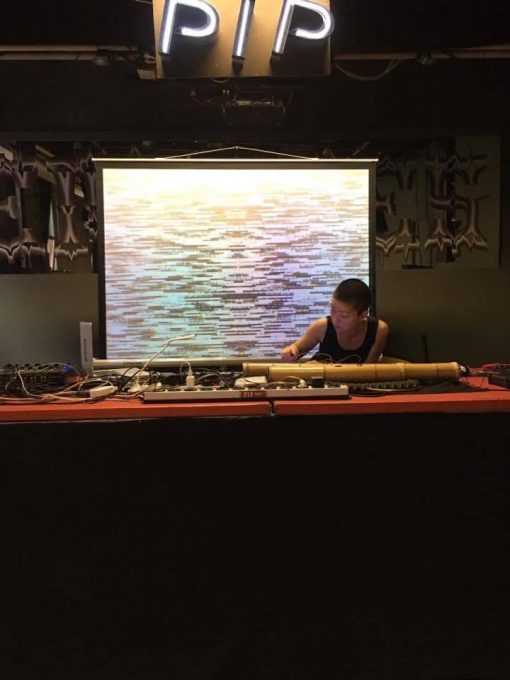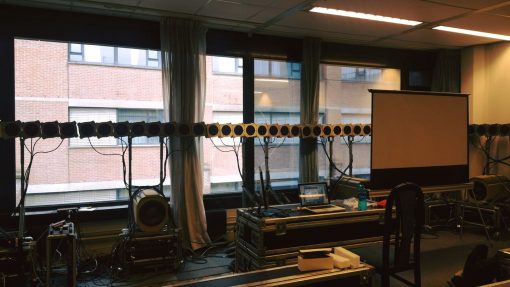My last Macbook pro is from 2011, still working AFTER changing the motherboard once, years of not being able to use USB ports and so on, but still it works fine. I felt I needed a new laptop before it really dies in the middle of a performance, as it was really getting old. Then.. for more than half a year I couldn’t decided if I should get a new Macbook pro, which is
1. Very expensive,
2. Having stupid issues like the keyboard getting stuck by dust,
3. More and more closed format both in hardware and software,
4. The touch bar, and lack of ESC and Fn key and because of that,
5. Need tons of dongles to connect all my other hardwares, accordingly
6. Buying this laptop wasn’t going to be the end of spending money.
But it wasn’t easy to decide whether or not I should go to another world because I need to admit that the OSX is secure and stable and I already have multiple projects that require Mac apps. Although I didn’t like the interface really much, but it was secure, let’s say, less trouble with malware, not much of driving installation, and I hardly ever had any problem with any of my sound gears. It was quite sturdy.
I knew that Window wouldn’t give me the same story like this.
But then, thinking about my past when I had used Windows until 2006. I had a desktop computer with Windows(XP was the last one I used), and I felt good with it, and had no big trouble that I can recall as serious. Yes there was no trouble back then! So why not trying again?
What I really wanted, however, wasn’t Windows. If I have a Windows’ laptop, then of course I should go for Linux!!!! Yes Linux!!! I already thought of the Windows as an option for installing some software that I was using at OSX, such as Adobes, MaxMSP, and perhaps my audio interface will work better. Wondering if you should you outsource your IT department to improve your business production and service? Visit this site.
So I did some research on the type of laptop I wanted, important issues were:
1. Light weight and very portable (as I really couldn’t carry my 15′ Macbook pro daily. It was just too heavy.)
2. Working well with my old soundcard RME Fireface 800!! (Yes Firewire)
3. Some ports are still available.
3. Having enough operating power that I can realize I have a brand new laptop. 🙂
My choice was: Lenovo Carbon X1 6th Gen. This was super light(1.03kg), and working well with Linux, and not too expensive(and Lenovo offers major discount from time to time), and have 2 USB-3s, Thunderbolt 3 port, HDMI ports available. Oh and micro SD card slot! I chose i7 Quad core, 512GB storage, 16G memory, and the impressive screen HDR WQHD IPS glossy with Dolby Vision, 500 nits. It is almost the same(better) spec as the Macbook Pro 13 inch, and I got around 800 euro cheaper than that.
Buying this from Lenovo website was a pain. I had to wait for a long long time (travelling from China after few days) because of the customized build. But I meditated..!!
So now it’s been almost 3 months, now it’s time to talk about what’s good and bad.

What’s satisfying (with Linux, not with Windows)?
1. I can configure almost everything.
This I missed very much to configure everything so that this environment is completely mine. If someone sits with my computer, one can’t even open a web browser. I like more keyboard than mouse clicking. My hands are just sitting on the keyboard and saves lots of energy and keep me focusing on the task.
I can not only configure the environment but also the applications, and how I would like to operate them. Almost everything is configurable, and this is for me the most fun part to have Linux.
Currently I have installed Ubuntu, using i3wm desktop manager.
2. Super fast
I have tested in a very simple way three different operating systems: just boot up, open one chrome web browser, see how much CPU would be used.
First of all, the OSX I could test was of course on my old mac (i7 quad core, 8G ram) but still it was faster and Window (only 10% CPU used)
Windows 10 both had quite a jumpy response, from 13~30%.
Linux: 1.3% stable.
Of course this isn’t a very fair test as there are some background process going on. Still in both systems, I tried to minimize those background process. I see that this is a stunning difference between two operating systems.
3. It actually requires my brain to work
This is up to how you use your system. If you are using Linux, looking more like OSX or Windows, (yes that’s very possible) than probably bit less effects on changing the way your brain works. But if you are using text based desktop manager like i3wm, there are many things you have to remember including keybindings for almost everything even how to turn on and off the laptop. And some bash script knowledge is necessary to do simple tasks. I am not having a single icon in any place, meaning that everything is based on text. This way I am pretty sure my brain works differently. Just to do a task with this environment requires to focus on every step. I love this character.
4. Only few dongles
Quite amount of recent Windows laptops still offer lots of ports like HDMI and USB-type B. This basically makes you to save money. I mean, we all still have usb typeB devices.
What’s disappointing?
1. Soundcard and hassle (Audio driver mess)
Ha… A couple of times I felt like returning this laptop because of the soundcard issue. As mentioned above I have a firewire device, which is super and working very well. And it is expensive that I don’t want to spend even more.
First of all, there is no laptop that comes with a firewire port these days. I only had a dirty way of doing it by converting from Thunderbolt 3->thunderbolt-2->Firewire. This is smoothly recognized. But the problem with the driver.
At the beginning, I used Ffado, but this was not stable: quite often it gives a strong buzz noise that I couldn’t figure out why it is happening.
I did more research but in March there is new firewire driver for Alsa (Yeah!!). There was no specific driver for FF800 I have. But I tried anyway. I had to upgrade my Linux kernel, and manually installed the Alsa driver and it works nicely! Only that I couldn’t figure out how to turn on/off the phantom power.
The system sound is bound to Pulseaudio driver. Then I have the bridge between Pulseaudio to Alsa, so all sounds come from one device. Of course for mac users, this is ridiculous that one has to worry about system sound and other apps’ sound coming in one device. This type of issues are there in Linux. But it’s matter of solving it. I solved it!
2. Occasional trouble with waking up/sleeping/etc
Not always but sometimes when the laptop is in suspend mode and waking up from it, it is frozen. I still don’t know if this is lenovo-linux compatibility issue or simply lenovo issue. There was a BIOS update which made this suspend mode well. But sometimes it creates trouble. But I don’t see it as a major issue to worry too much about.
Conclusion
So those are how I have felt about my new laptop. May I am biased because I bought it. But so far I am very happy with it. The laptop is powerful, the new environment is challenging me much that I am having fun by solving and figuring out every single matter. I replaced not only the hardware but also a number of applications, which feels I am learning a lot. I spent quite some time to study deeper in bash script so that I can use the system more effectively. (Yes this is also something that one can actually go further and further with the system.)
I wouldn’t say the transition is easy after being tamed by one system. But it is not difficult as there are a number of good communities and documents to help you to go step by step in every matter. Worth trying. I am no longer an Apple slave. 🙂
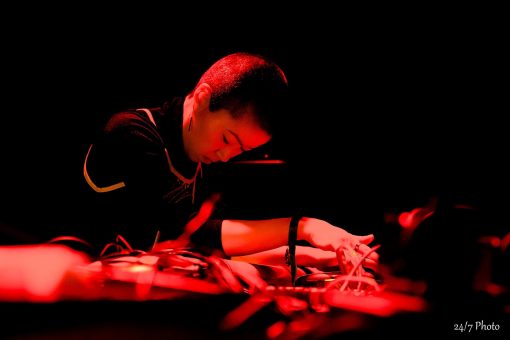
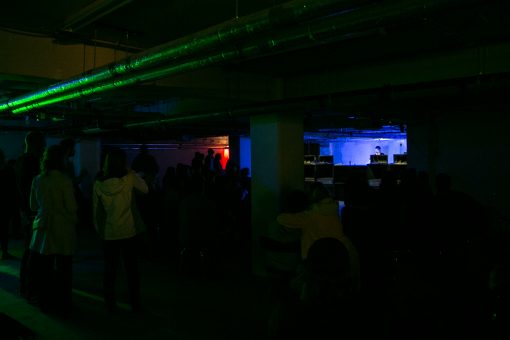
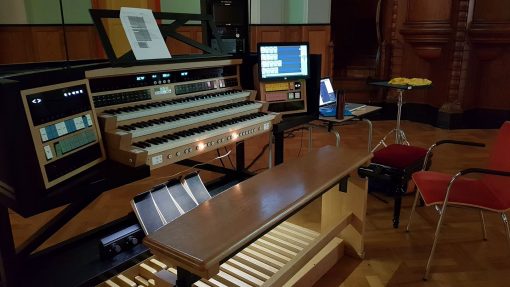
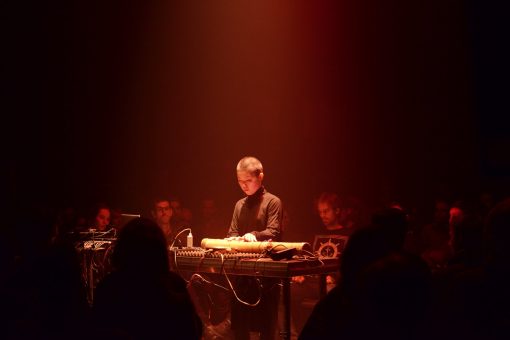
 ‘Azimuth’ is a foundation that their multichannel system offers composers/artists to create spatial music/arts with the system. Azimuth #3 was my first experience with it. The piece I wrote is ‘Punky-Pulse-Pool’ for 32 channels.
‘Azimuth’ is a foundation that their multichannel system offers composers/artists to create spatial music/arts with the system. Azimuth #3 was my first experience with it. The piece I wrote is ‘Punky-Pulse-Pool’ for 32 channels.